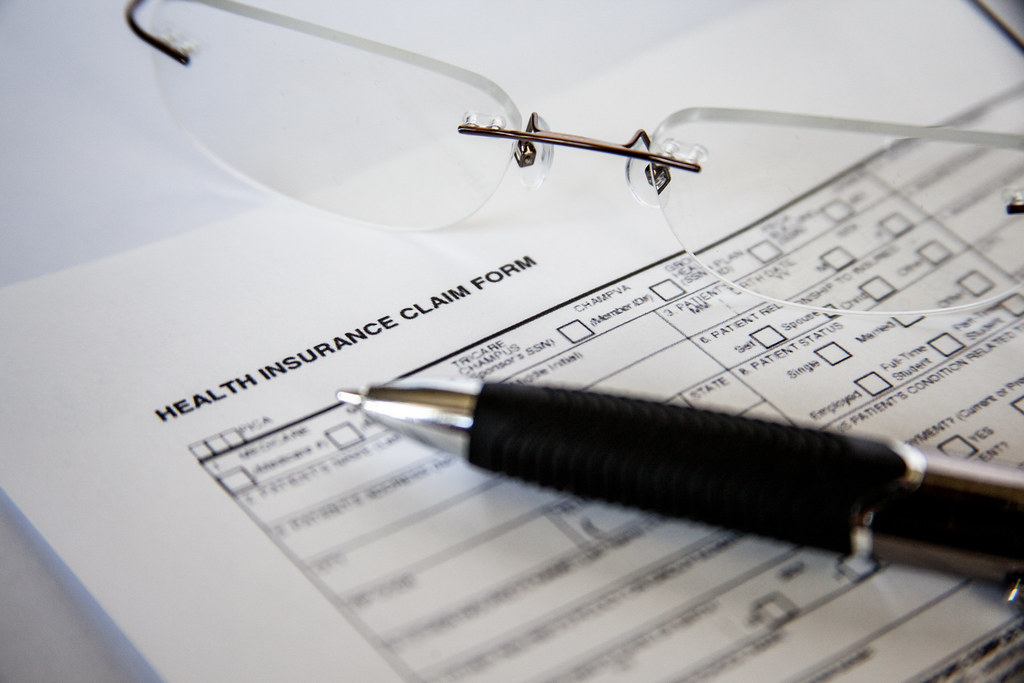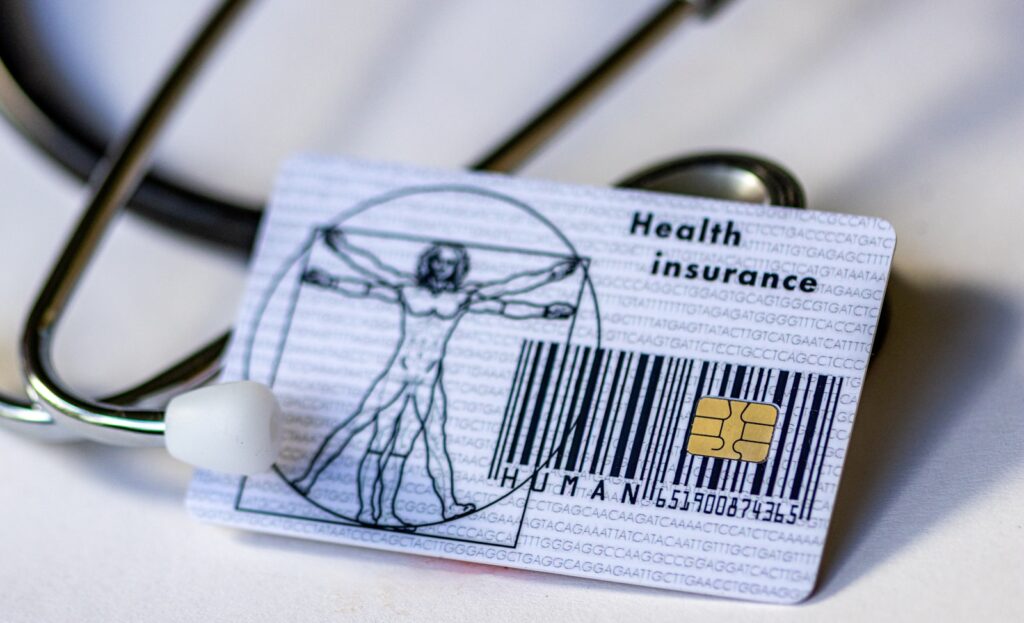
Understanding your health insurance can often feel like trying to decipher a secret code, and among the many documents you receive, the Explanation of Benefits, or EOB, stands out as one of the most crucial, yet frequently misunderstood. Far from being a bill, this statement from your health insurance company serves as a detailed roadmap of the medical services you’ve received, how your insurance has processed your claim, and what your financial responsibility might be.
For many, the sight of an EOB can trigger confusion and even anxiety. It’s filled with medical jargon, numbers, and payment details that can seem overwhelming at first glance. However, learning to confidently read and interpret your EOB is an essential skill that empowers you to manage your healthcare expenses, prevent billing errors, and ultimately make more informed decisions about your health coverage.
This in-depth guide is designed to demystify your EOB, breaking down its key sections step by step. We’ll walk through each component, explaining what the terms mean and what information you should be looking for. By the end, you’ll be equipped with the knowledge to read your EOB like a pro, ensuring you understand your benefits and avoid any unwelcome financial surprises.

1. **What Exactly is an Explanation of Benefits (EOB)?**At its core, an Explanation of Benefits (EOB) is precisely what its name implies: an explanation. It is a statement that your insurance provider sends after you receive medical care, detailing how your claim for services was processed. Crucially, it is not a bill from your provider; rather, it’s a communication from your insurance company to you.
This vital document outlines several key pieces of information related to your medical visit or procedure. It clearly lists the services you received, the amount your provider originally charged for those services, how much your insurance plan actually paid towards the costs, and what portion, if any, you are ultimately responsible for paying. Understanding this initial distinction is paramount to navigating your healthcare finances.
EOBs play a significant role in shedding light on your health plan’s coverage specifics. Even if your healthcare provider is in-network and accepts your insurance, your plan might not cover every single service or the full cost of what was provided. The EOB helps to break down these cost-sharing details, showing you how your deductible, copayments, and coinsurance apply to the care you received, offering transparency into how your benefits are being utilized.

2. **General Information: Patient, Plan, and Provider Details on Your EOB**Every EOB begins with a section dedicated to general information, which is fundamental for matching the document to the correct visit and ensuring accuracy. This section typically includes critical details about you, the patient, such as your full name and your unique policy number, which identifies your specific health plan with the insurer.
Beyond your personal identification, the EOB will also feature information about your health plan itself, confirming the type of coverage you hold. Furthermore, it clearly states who provided your care, listing the name of the doctor, hospital, or medical facility involved, along with the specific date or dates when the services were rendered. This helps you confirm that the EOB corresponds to a service you actually received.
An important reference point found in this section is the claim number, a unique identifier that your insurance company uses to track your specific claim. You’ll also find details about the payee – the person designated to receive reimbursement for any overpayments. This section will often include your health plan’s phone number, a direct line to call if you have any questions about finding a provider or understanding what specific services are covered under your plan.

3. **Decoding Your Claim Details: Date of Service and Service Descriptions**Once the general information is established, the EOB moves into the specifics of the care you received, detailing each service for which a claim was submitted. This section is often presented in a row-by-row format, with each line typically representing a distinct service or procedure you underwent during your visit. It’s here that you can align the EOB with your own memory of the appointment.
Each entry will include the precise date of service, confirming when the medical care was provided. Alongside this, you will find a service description, offering a brief explanation of what service you had. This could be anything from a routine medical visit or a specific lab test to a comprehensive screening, providing a clear, albeit sometimes concise, summary of the care.
In many EOBs, you might also see a procedure code, often referred to as a CPT (Current Procedural Terminology) or HCPCS (Healthcare Common Procedure Coding System) code. These standardized codes are used by healthcare providers and insurers to categorize and bill for medical procedures and services. While these codes can appear technical, their presence confirms the exact nature of the service claimed by your provider, adding another layer of detail to your understanding.

4. **Understanding the Numbers: Provider Charges, Allowed Amounts, and Insurer Payments**This is often the section where most confusion arises, as it delves into the financial specifics of your care. The EOB will list the initial cost of your care as “Provider Charges.” This amount represents what your healthcare provider originally billed for your visit or service before any insurance adjustments or negotiations take place. It’s the starting point for all cost calculations.
Following the “Provider Charges,” you’ll typically see an “Allowed Amount.” This is a crucial figure, as it represents the negotiated rate that your insurance company has agreed to pay your provider for that specific service. The Allowed Amount may not be the same as, and is often lower than, the Provider Charges. This difference is due to the contractual agreements between your insurer and in-network providers, which often secure discounted rates.
Next, the EOB will clearly state “Paid by Insurer,” which is the exact amount your health plan will directly pay to your provider for the service. It’s important to note that you usually do not owe the full “Billed Amount.” Instead, your financial responsibility is calculated based on the “Allowed Amount” after the insurance payment, deductibles, copayments, and coinsurance are applied. Focusing on the patient responsibility line, rather than the initial billed amount, is key to understanding your true cost.

5. **Your Financial Share: Navigating “What You Owe” and Patient Responsibility**After your insurer has processed their portion of the payment, the EOB will clearly highlight “What You Owe,” also referred to as the “Patient Balance.” This is the amount that remains your responsibility to pay after all insurance payments and adjustments have been accounted for. It represents your out-of-pocket costs for the services received.
This section provides a detailed breakdown of how your payment was calculated, often including several components. You might see amounts “Applied to deductible,” indicating that a portion of the cost is being counted towards your annual deductible, which is the amount you must pay before your insurance begins covering a larger share of your medical expenses. If you haven’t met your deductible yet, a significant part of the cost may fall under this category.
Other common elements contributing to your Patient Balance include “Coinsurance,” which is a percentage of the allowed amount you’re responsible for after your deductible has been met, and a “Copayment,” a fixed fee you pay for certain services at the time of care. Additionally, the EOB may list a “Non-covered amount,” which refers to costs not covered by your plan, such as out-of-network charges or services explicitly excluded from your policy. It’s important to remember that the EOB only shows what you owe, not if you’ve already paid for part of it at the time of service. If your final bill from the provider is higher than the Patient Balance shown on your EOB, it’s a red flag, and you should contact your provider to discuss the discrepancy.
6. **The Mystery of Remark Codes: What They Tell You**Occasionally, when reviewing your EOB, you might encounter a seemingly cryptic entry labeled as a “remark code.” These codes are not merely arbitrary letters and numbers; they serve as concise notes from your health plan, designed to provide additional explanation regarding the costs, charges, and paid amounts for your visit. They act as a shorthand to convey specific details about how a claim was processed or why certain amounts were or were not covered.
Typically, a remark code consists of two or three letters and numbers, making them quick to reference but often perplexing without a key. For instance, a code might explain why a service was partially denied, or clarify that a particular charge was adjusted due to a network discount. These codes are vital for understanding the nuances of your claim’s resolution.
Fortunately, you don’t need to memorize these codes. Every comprehensive EOB will include a legend or description of each remark code, usually located at the bottom of the document. Taking the time to locate and read these descriptions can shed significant light on any unusual entries or unexpected financial responsibilities, providing the clarity needed to fully grasp your EOB’s financial breakdown.

7. **Beyond the Basics: Year-to-Date Totals and Your Progress**Many EOBs include a helpful section dedicated to your year-to-date totals, offering a cumulative look at your healthcare spending and insurance coverage throughout the current plan year. This segment is an often-overlooked but invaluable tool for monitoring your financial progress and anticipating future healthcare costs. It transforms individual claim information into a broader financial perspective.
This section typically shows how much you’ve already paid towards your annual deductible, giving you a clear picture of how close you are to meeting that threshold. It also summarizes the total amount you’ve paid out-of-pocket for the year, which is crucial for tracking your progress towards your out-of-pocket maximum – the absolute most you will pay in a plan year before your insurance covers 100 percent of eligible costs.
Tracking these year-to-date figures can significantly empower your healthcare planning. Knowing your progress helps you anticipate when your insurance coverage will increase, particularly after your deductible or out-of-pocket maximum has been met. This foresight allows you to budget more effectively for future medical expenses and make more strategic decisions about scheduling non-urgent care, ultimately giving you greater control over your healthcare finances and peace of mind.
Understanding the individual components of your Explanation of Benefits is a powerful first step, but the true value comes from knowing how to actively use this information. The EOB is more than just a summary of charges; it’s a vital tool that empowers you to take control of your healthcare finances and ensure you’re not overpaying for services. Let’s delve deeper into why consistent EOB review is so important and how to integrate it into your health insurance management.

8. **Why Regularly Reviewing Your EOBs is Crucial**Beyond just understanding what each line item means, developing a habit of regularly reviewing your EOBs is a cornerstone of effective healthcare management. These documents aren’t just administrative paperwork; they are your personal ledger for every medical service you’ve received, acting as a critical safeguard against errors and an essential tool for financial planning. Consistently checking your EOBs offers you a profound level of insight into your benefits.
One of the primary reasons EOBs matter is that they help you understand your exact share of the cost for any given service. This transparency allows you to see how your deductible, copay, or coinsurance applies to the care you’ve received, preventing unwelcome surprises when the actual medical bill arrives. It clarifies the financial landscape, transforming abstract policy terms into concrete numbers related to your specific care.
Moreover, EOBs are indispensable for tracking your progress toward meeting your annual deductible and your out-of-pocket maximum. As highlighted in the previous section, these year-to-date totals are critical markers. By monitoring them, you can anticipate when your insurance coverage will increase significantly, empowering you to budget more effectively and make informed decisions about scheduling future medical care, especially if you’re close to reaching your maximums.
Critically, a diligent review of your EOBs serves as your first line of defense against potential billing errors or, in unfortunate cases, claims for services you didn’t actually receive. These documents provide a detailed account that you can cross-reference with your own medical records and appointment history. Catching these discrepancies early can save you significant money and prevent headaches down the line, giving you better insight into your benefits and protecting your financial well-being.

9. **Where and When to Expect Your EOBs**Knowing where and when to anticipate your Explanation of Benefits statements is essential for maintaining an organized approach to your healthcare finances. Your insurance company typically dispatches EOBs after they process a claim for medical services you’ve received. While the timing can vary slightly, you can generally expect to receive these documents a few weeks following your appointment or procedure. This gives your insurer adequate time to communicate with your provider and adjudicate the claim.
Insurance companies offer several convenient methods for you to receive your EOBs. Many still send physical copies by mail, which often arrive as a standard letter or document packet. However, a growing number of insurers are leveraging digital platforms. You might receive an email notification with a direct link to a secure online portal where you can log in, view, and download your EOBs. Accessing these documents digitally often allows for quicker retrieval and easier long-term storage.
It’s important to be prepared for the possibility of receiving multiple EOBs for a single medical event or visit. This can happen if you undergo several distinct services during one appointment, such as a doctor’s consultation followed by lab work or imaging; each service might generate a separate claim and, subsequently, a separate EOB. Similarly, if you have more than one insurance plan, such as a primary and a secondary insurer, you will likely receive an EOB from each plan detailing their respective contributions.
To ensure you don’t miss these important updates, it’s vital to keep your contact information, including your mailing address and email, current with your insurance provider. Timely receipt of EOBs allows you to promptly review and act upon the information, fostering proactive management of your healthcare claims and expenses. Regularly checking your insurer’s online portal can also be a good practice to ensure you’re not missing any electronic notifications.
Read more about: I Live in Italy, and These 5 Cool-Girl Swimwear Trends Are Everywhere

10. **EOB vs. Medical Bill: The Crucial Distinction**One of the most common points of confusion for individuals navigating their health insurance is understanding the fundamental difference between an Explanation of Benefits (EOB) and a medical bill. It’s a critical distinction that, once clarified, can alleviate significant stress and prevent unnecessary payments. The most important fact to remember is this: an EOB is **not a bill**.
An EOB is a statement that your insurance provider sends to you, the policyholder. Its purpose is to explain how your claim for medical services was processed. It details what services you received, the amount your provider charged, how much your insurance plan paid, and what portion, if any, remains your responsibility. Think of it as an informational summary from your insurer, outlining their actions and calculations regarding your care.
In contrast, the actual medical bill is sent directly to you by your healthcare provider – the doctor, hospital, or clinic that rendered the service. This is the document that requests payment for the services you received, detailing the amount you are expected to pay out-of-pocket. The amount on this bill should ideally match, or very closely reflect, the “Patient Balance” or “What You Owe” section that you found on your EOB.
The crucial step, therefore, is to always compare your EOB with the medical bill you receive from your provider. This comparison allows you to verify several key points: that the charges match between both documents, that your insurance was applied correctly according to your plan’s benefits, and that you are not being billed for something you may have already paid (for instance, a copay at the time of service). If your final bill from the provider is higher than the Patient Balance indicated on your EOB, this is a significant red flag that warrants immediate attention and discussion with your provider’s billing office.

11. **Identifying Common Billing Errors on Your EOB**Even with the most streamlined systems, billing errors can unfortunately occur, and your EOB is your best defense against them. Learning to spot these common mistakes can save you from paying for services you didn’t receive or from incorrect charges. Being proactive in reviewing each EOB enables you to catch discrepancies early and address them promptly, which is crucial for protecting your financial interests.
One frequent issue to watch for is duplicate charges. This happens when a provider mistakenly bills for the same service twice, often with slightly different dates or codes. Carefully compare the dates of service and service descriptions on your EOB with your personal records to ensure that each listed service corresponds to a unique and actual instance of care. Any identical entries that seem unwarranted should be questioned.
Another common error relates to incorrect patient responsibility amounts. You might find that the deductible, copay, or coinsurance applied to a service doesn’t align with your understanding of your plan’s benefits or with what was discussed with your provider. Always cross-reference the “What You Owe” section of your EOB with your known plan details and any upfront payments you made at the time of service. If a service should have been covered more extensively by your plan, or if your copay seems off, it’s worth investigating.
Furthermore, be vigilant for claims for services you didn’t actually receive. This is a serious error that can range from a simple data entry mistake to, in rare cases, fraudulent billing. Review every service description carefully to ensure it corresponds to care you personally obtained. If a procedure or lab test is listed that you have no recollection of, do not hesitate to contact your insurer and provider for clarification.
Finally, watch out for out-of-network billing errors. Sometimes, a provider or facility that you believed was in-network might mistakenly be billed as out-of-network, leading to significantly higher costs for you. If you purposefully sought in-network care, and your EOB shows out-of-network charges, this needs to be addressed. If you identify any of these common issues, or if anything on your EOB simply looks wrong or unfamiliar, your next step is to contact your insurer’s member services department or the provider’s billing office for clarification and resolution.

12. **Actionable Steps to Resolve EOB Disagreements**Discovering a discrepancy or an error on your EOB can be frustrating, but it’s important to remember that you have rights and clear steps you can take to resolve these disagreements. The process often begins with straightforward communication and can escalate if the issue isn’t resolved to your satisfaction. Being prepared and persistent is key to successfully navigating these situations and ensuring fair billing.
Your first and often most effective step is to call your insurance company directly to inquire about the claim. Use the phone number provided on your EOB or your insurance card. Be prepared to clearly explain why you believe there is an error, referencing specific details from the EOB, such as claim numbers, dates of service, and the particular amounts in question. Sometimes, a simple phone call can clarify a misunderstanding or identify a quick fix, such as a coding error.
If the initial phone call doesn’t resolve the issue, or if you still believe your insurance didn’t cover something it should have, you have the right to request a review of the decision. This often involves submitting a formal request to your insurer for a re-evaluation of the claim. If that review still doesn’t yield a satisfactory outcome, you may then need to file a formal appeal. Insurance companies have established appeal processes, and you can find information on how to initiate this process in your plan documents or by asking a representative.
Throughout this entire process, meticulous documentation is paramount. Keep a detailed record of every call you make, including the date, time, the name of the representative you spoke with, and a summary of your conversation. Also, retain copies of all letters, emails, and forms you send or receive. This comprehensive paper trail will be invaluable if you need to escalate your case or refer back to previous communications, providing concrete evidence of your efforts to resolve the disagreement. Remember, you have the right to appeal decisions, and sometimes errors can be resolved with a simple phone call if you persist.
Unexpected charges, such as services marked as out-of-network when you believed them to be in-network, or claims denied for reasons that seem unclear, are all valid grounds for dispute. Even incorrect patient information, like a misspelled name or an incorrect date of birth, can lead to claim denials that can often be easily rectified. If managing these details feels overwhelming, working with a health insurance consultant can be a game-changer; they can walk you through your EOB, assist with disputing claim errors, and help advocate on your behalf.
13. **Practical Tips for Effective EOB Management and Health Insurance Navigation**Mastering your EOBs is a skill that improves with practice, and by incorporating a few practical habits, you can effectively manage your healthcare expenses and navigate the complexities of your health insurance with greater confidence. These tips are designed to empower you to stay organized, spot issues, and make the most of your health plan.
Firstly, make it a point to compare your EOB with your personal records. Keep copies of all medical bills, receipts for copayments, and notes from your appointments. Cross-referencing these documents with your EOB ensures accuracy in service dates, descriptions, and billed amounts. This diligent comparison is your strongest tool for looking for potential errors and confirming that every charge is legitimate and correctly applied.
It’s also crucial to understand your overall health insurance benefits, including your plan’s coverage limits, deductibles, and out-of-pocket maximums. The more informed you are about the specifics of your policy, the better equipped you will be to anticipate your expenses and understand why certain amounts are listed as patient responsibility on your EOB. Knowing these parameters helps you make smarter decisions about your healthcare spending throughout the year.
If, after your review, something still seems unclear or incorrect, do not hesitate to contact your insurance company’s member services department. The phone number is usually printed on your insurance card and on the EOB itself. Their representatives are there to explain coverage details, clarify billing, and help you understand your financial obligations. Making that call can often provide the clarity you need and prevent issues from escalating.
For record-keeping, it is a sound practice to retain your EOBs for at least a year. Some experts even recommend keeping them for longer, especially if there are ongoing disputes or for tax purposes, as certain medical expenses can be tax-deductible. Digital copies, easily saved on your computer or cloud storage, are an excellent option for long-term record-keeping, ensuring you have access to these documents whenever needed without clutter.
Finally, remember that understanding your EOB can sometimes feel like a daunting task, and you don’t have to go it alone. Health insurance consultants, such as those at Health Insurance Consulting, specialize in helping individuals navigate these complex documents. They can explain your EOB step by step, assist with disputing claim errors, and even help you find more cost-effective health insurance options by providing free cost comparisons. Their expertise can save you time, money, and significant stress.
Your Explanation of Benefits may not be the most exciting mail you receive, but it is undoubtedly one of the most important. Taking the time to understand and review your EOBs empowers you to manage your healthcare expenses, prevent billing errors, and make better, more informed use of your health insurance. It provides peace of mind, knowing you have a clear picture of your healthcare journey and financial responsibilities. Don’t simply toss it aside—take a few minutes to check that everything looks right. Your wallet and your well-being will thank you for it, ensuring you are always in control of your health decisions and finances. Your proactive approach today lays the groundwork for a healthier, more financially secure tomorrow.





